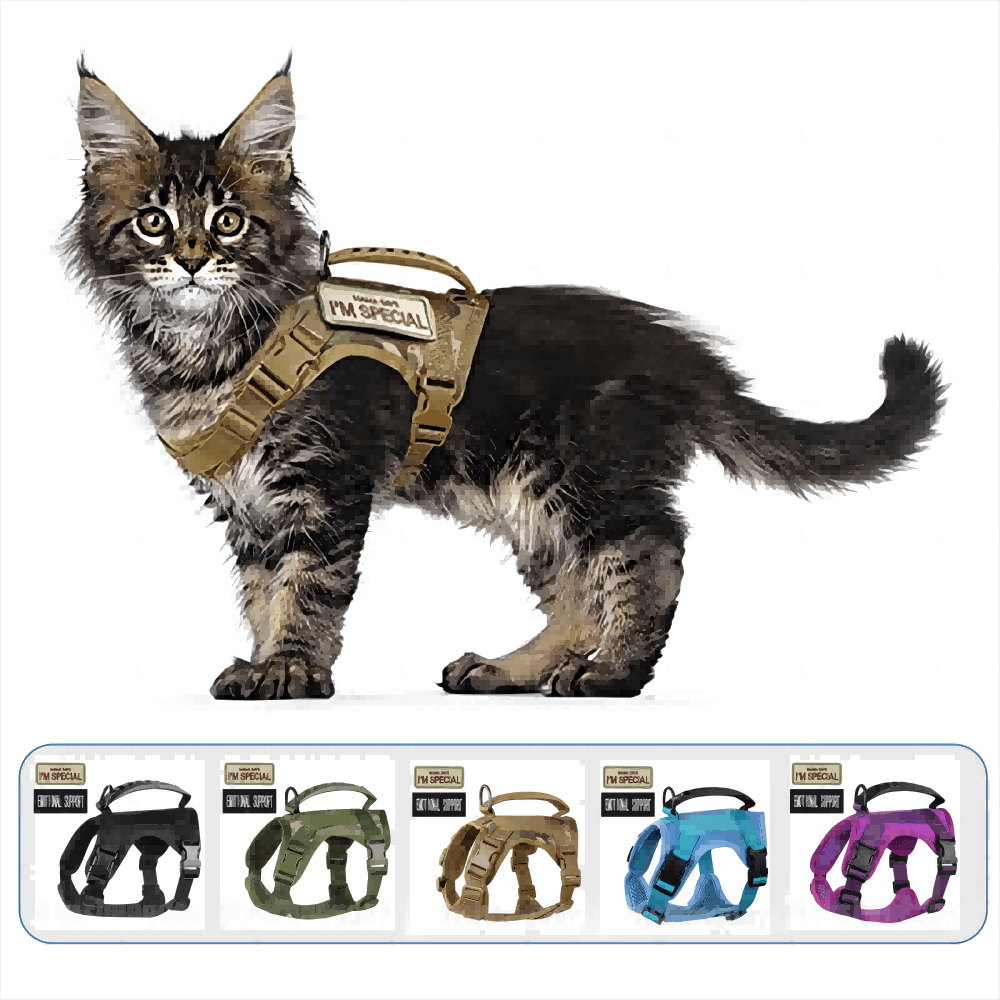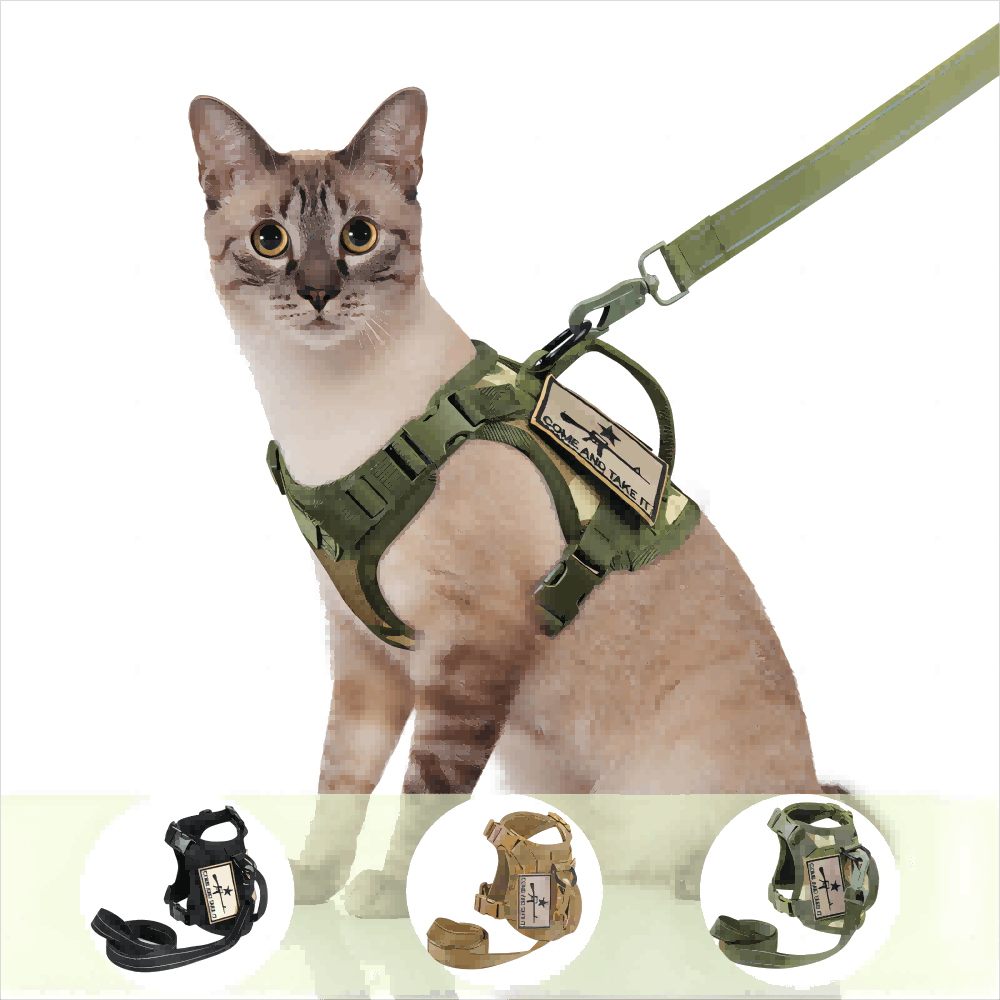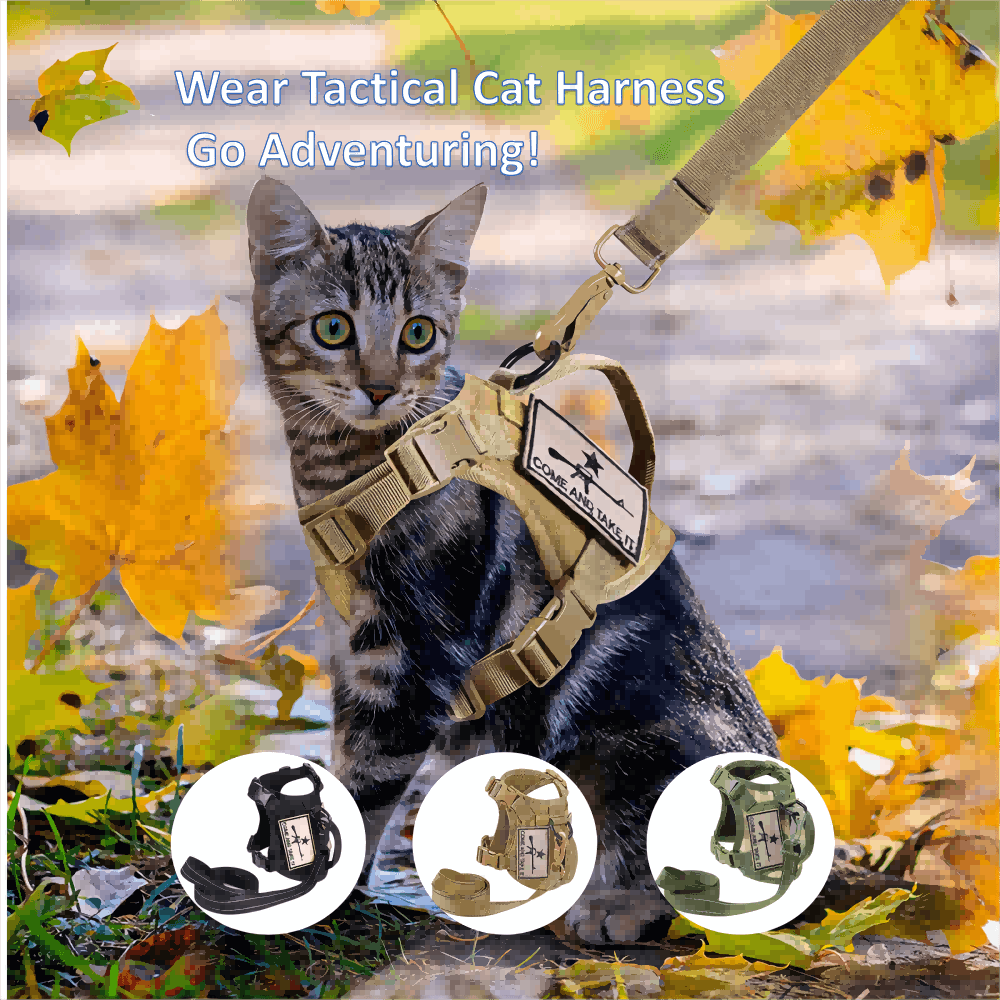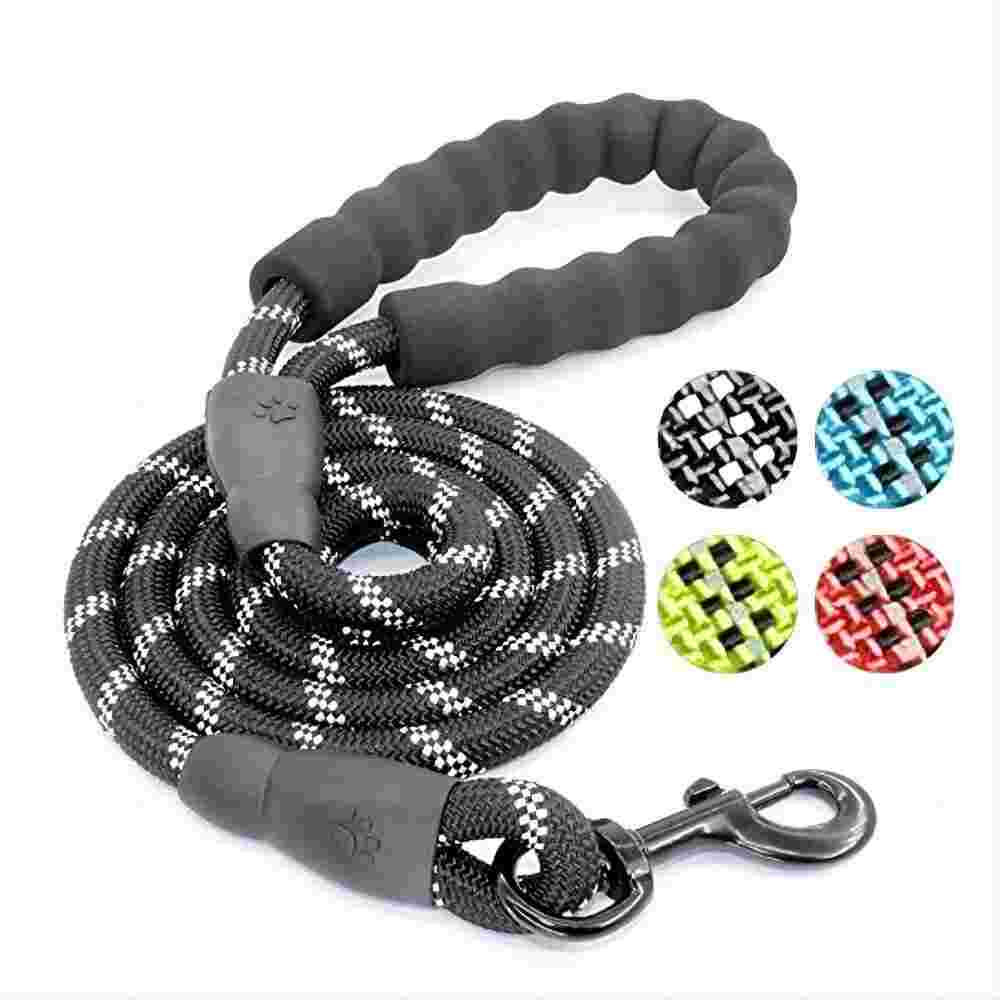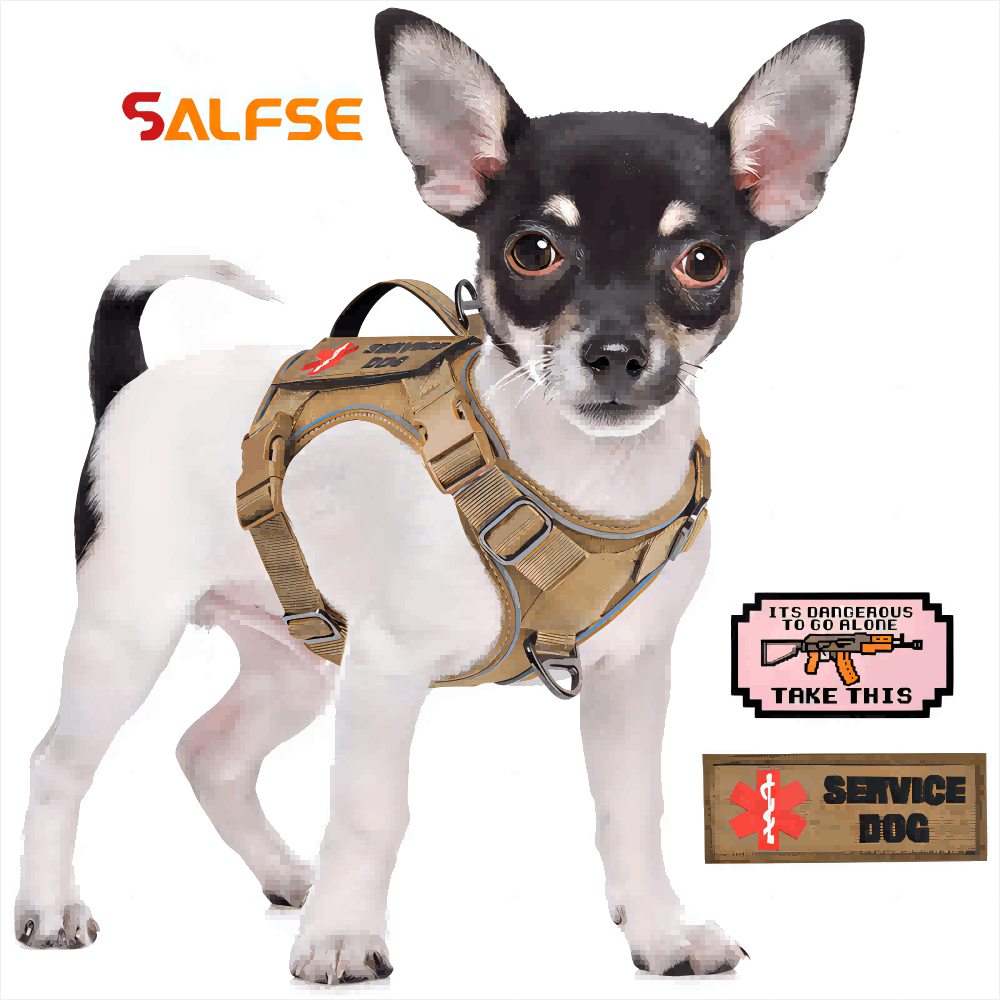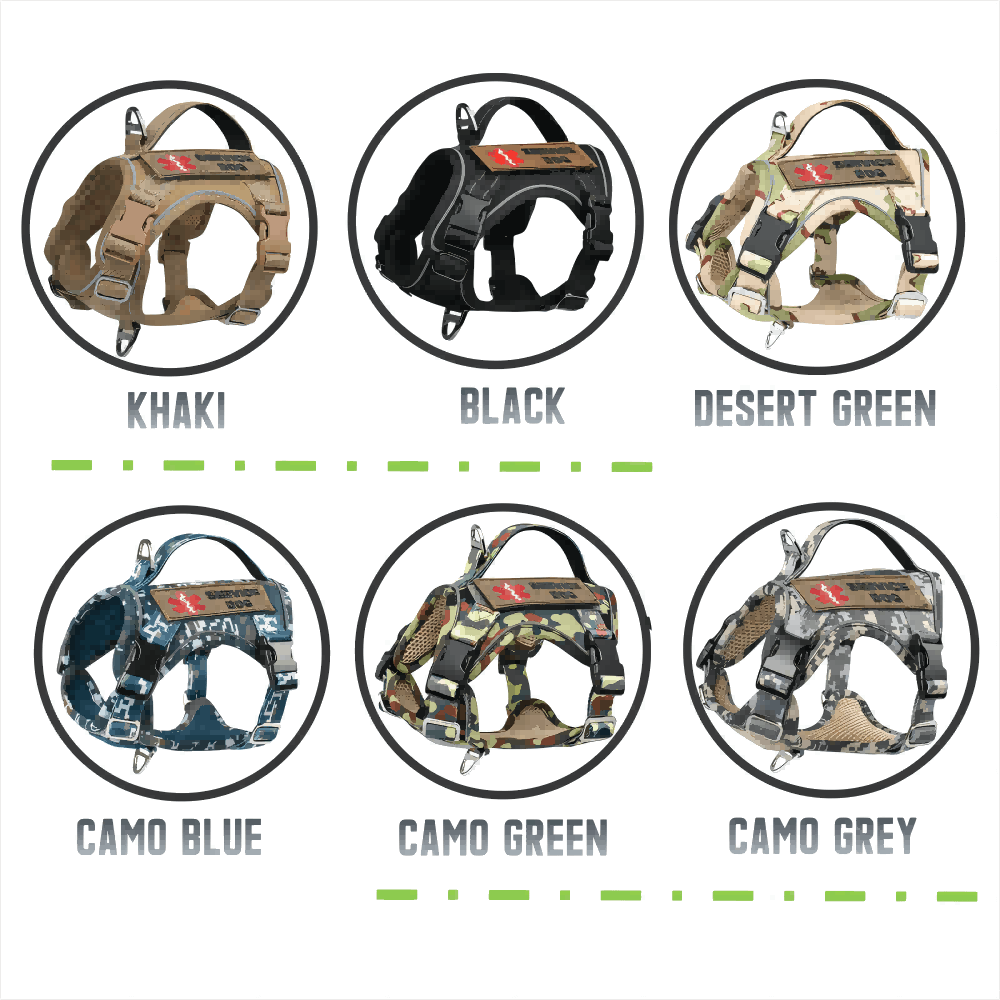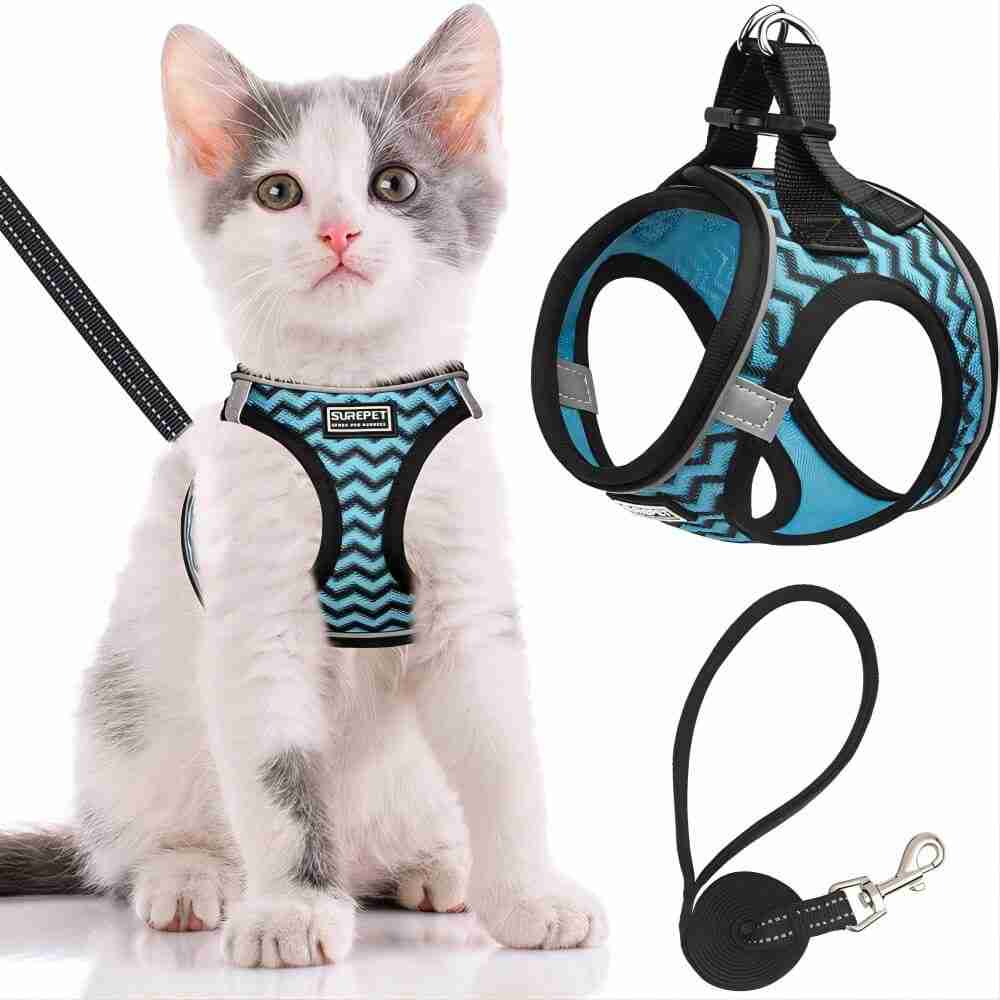1.In order to ensure the safety and health of your dog, you must use a leash or a tactical dog harness when walking your dog.
2.Walking the dog is not only a compulsory course for dog owners, but also a pleasant activity for dogs.
3.Before going for a walk, properly wear leashes, tactical dog harnesses, and muzzles on dogs to prevent them from running around and getting lost.
4.It is necessary to arrange the amount of exercise reasonably according to the characteristics of different breeds of dogs to ensure their happiness and health.
Below we will introduce how to train a dog to follow you through detailed steps
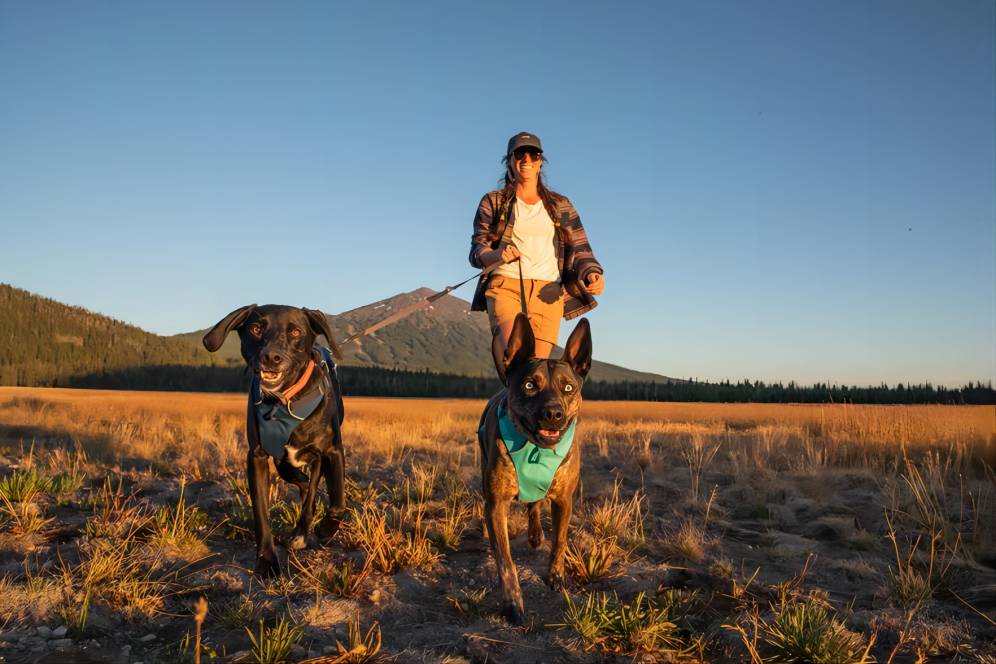
1.For the safety and health of your dog, remember to put on a leash when you take it out for a walk.
Walking the dog can be said to be a compulsory course for dog owners. For dogs, going out for a walk is a very pleasant thing for the body and mind; in order to prevent the dog from running away and getting lost, we must wear a leash, a tactical dog collar and a tie for the dog when we take the dog for a walk. Give your dog plenty of time to get used to the leash and tactical dog collar before starting training. Make sure it’s comfortable and comfortable wearing the gear.
In order to cope with the energetic big dogs, some families even dispatch all members to meet the dog’s exercise. Therefore, I emphasize here that before raising a dog, we must fully consider the different exercise requirements of different breeds of dogs, and arrange regular exercise according to the situation to make the dog happy and healthy.
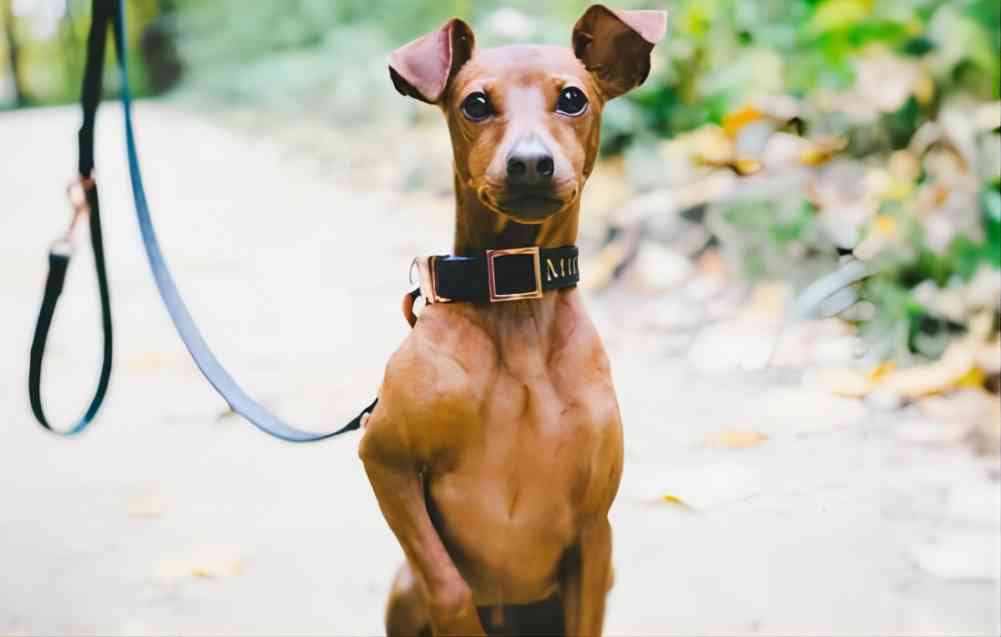
3.The dog may walk around on the leash at the beginning. When it rushes forward, you need to keep standing and not moving until it returns to your side and focuses on you. This lets the dog realize that you are the leader and that it should follow your lead.
Another more effective way is to walk in the opposite direction, so that it has to follow you. Once the dog is in step with you, praise and reward it. What you have to do is make it more interesting to follow you. Use your voice to attract its attention when changing directions, and praise it generously once it follows you.
When the dog can keep walking with you, you can add passwords, such as “follow closely” or “walk”. Whenever it follows you correctly, use the passphrase in time, this will help establish the link between the command and the behavior.
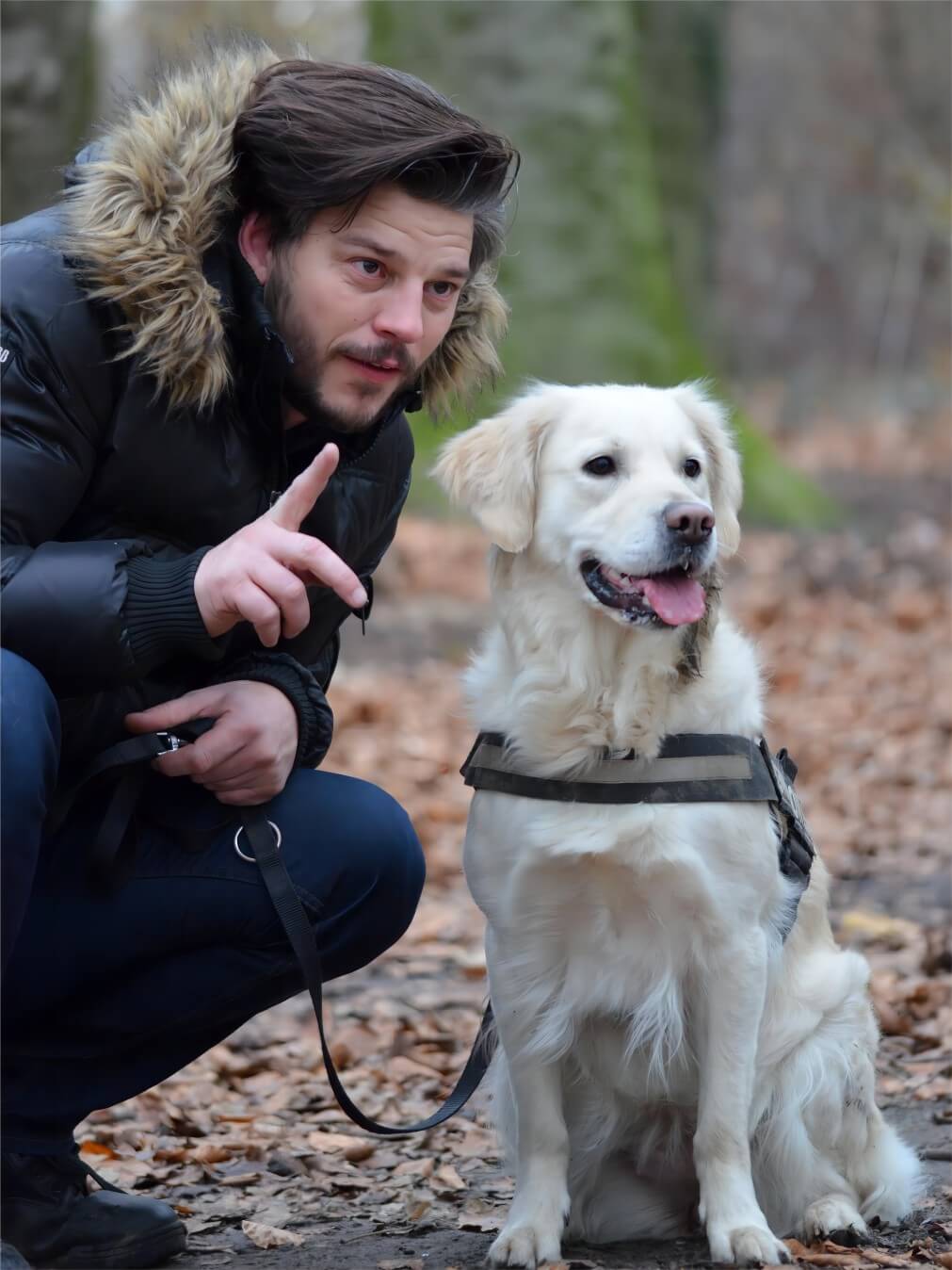
3.The nature of the dog will make it constantly explore and discover new things around it.
We often see dogs sniffing and stopping. Dogs are naturally curious and like to explore their surroundings. In fact, it’s a very stress-relieving activity for dogs. It is also good for dogs to encourage them to explore unfamiliar routes and hear the sounds of cars coming and going. Encouraging dogs to explore unfamiliar routes and sniff new scents will satisfy their curiosity and drain their energy. However, be careful to limit the level of curiosity and avoid excessive distraction.
4.When walking the dog for a walk, how do you control your dog
Dog walking training is not just a simple walk, but a contest of power between the owner and the pet. Observe the relationship between many pets and their owners. In many cases, it is not the owner walking the dog, but the dog “walking the owner”. To make sure you maintain leadership in the relationship.
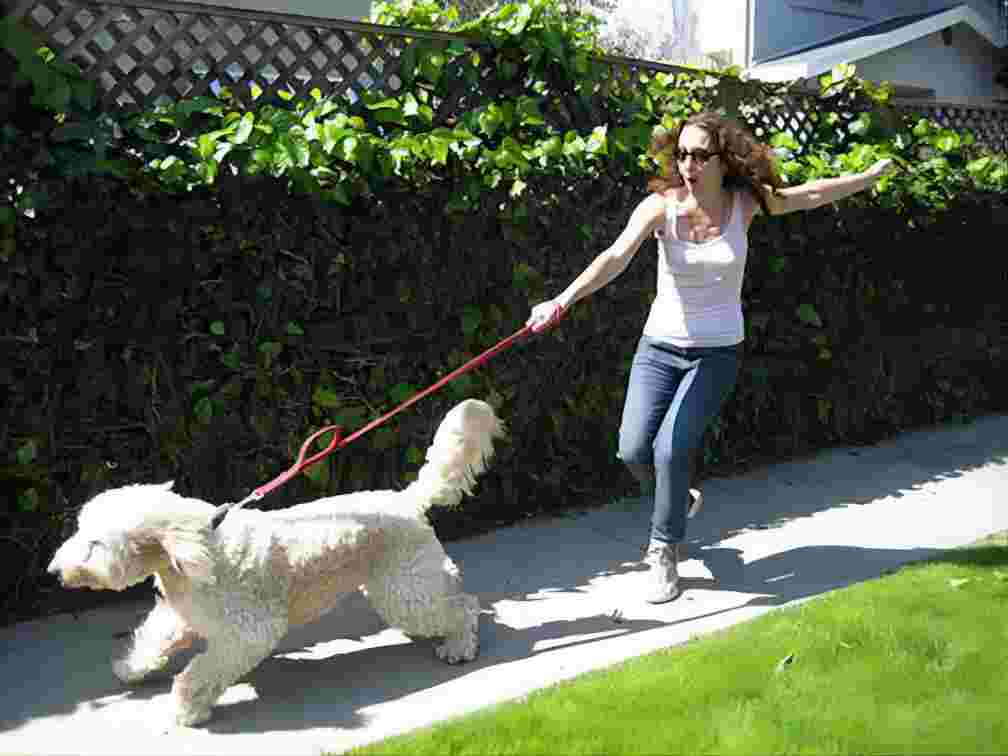
① First of all, in terms of time, if you fix the walk at a certain time, the dog will be extremely sensitive to this time in just one week.
②If you don’t go out when the time comes, it will be very anxious and even start barking. His pressure immediately becomes the master’s pressure; seriously, such behavior has endangered the leadership position of the “master” in the group. The solution is not to fix the walk at a certain time. When to take a walk, how long to take a walk, and even whether to take a walk or not, should be decided by the owner.
③ The key point of walking training is that the walking time should not be too regular. When you find that your dog is a little used to going out at a certain time, then immediately change the walking time, so that it will not go out no matter it is windy or rainy outside when the time comes.
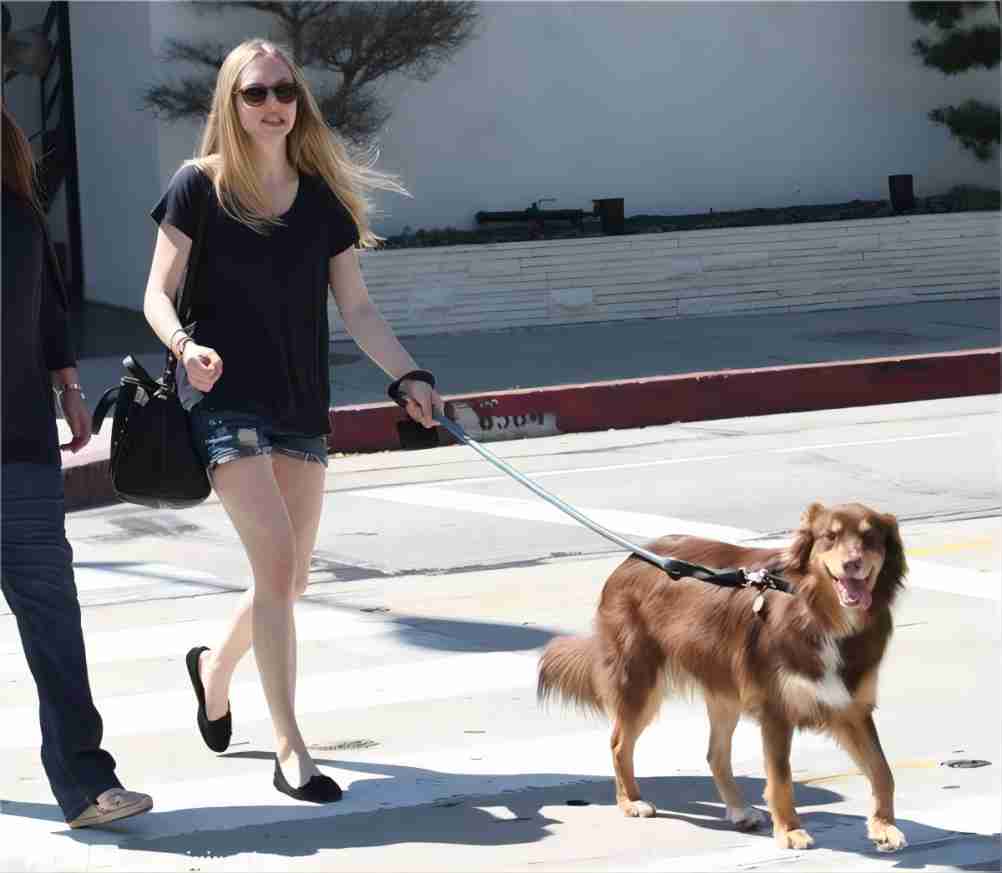
Things to keep in mind when taking your dog for a walk
①When the dog is 3-4 months old, let it get used to wearing a tactical dog collar and leash, and then he can carry out preliminary walking training. The initial training time is best controlled within 5 minutes.
② The frequency of walking training is more important than the duration. Going out three times or more a day, each time for 10 minutes, is more beneficial than a long trip.
③Instinctively, dogs are curious about new environments. It will sniff, smell, stop, and run around. At this time, the owner can use a novelty to attract the attention of the dog, so that he can return to his side and continue walking training. If the dog doesn’t come back, don’t shout its name, but wait patiently, or use methods to induce it to come back, then put on the leash and continue walking training.
④ Continuous walking training, the time can be extended in due course. For dogs aged 9 to 12 months, the walking time can be extended to 45 minutes.
Through the above steps and principles, you can train your pet dog to follow you and establish a good relationship with the master pet. Remember that training takes time and patience, always be consistent and use positive rewards to motivate your dog to behave correctly. Enjoy walking with your dog!
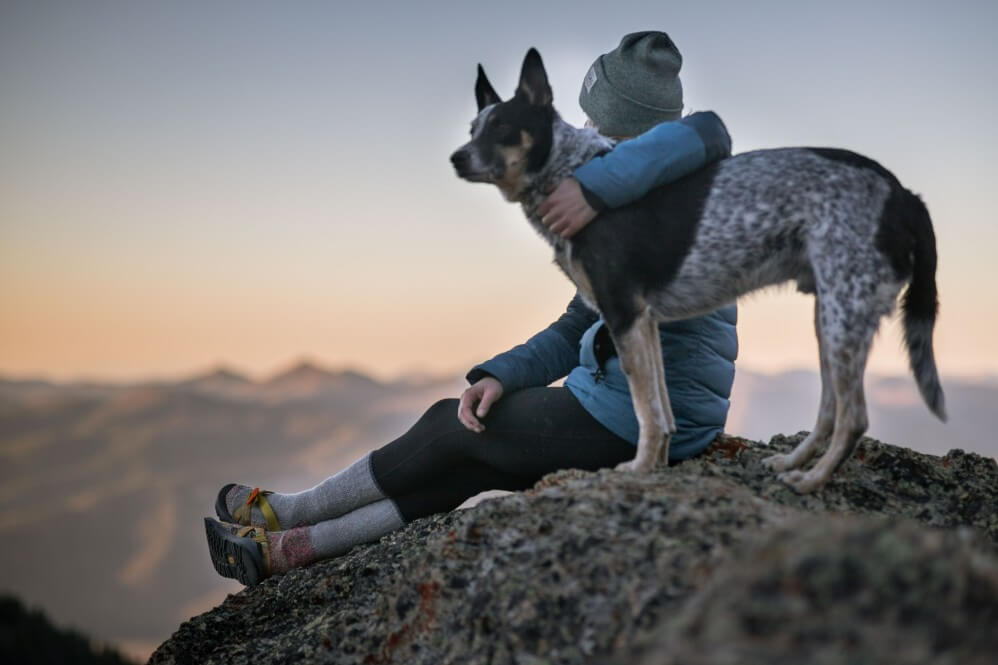
Questions and answers about training a dog to follow you
Q1: How to make the dog start to follow the pace of the owner?
A: You can try to stand still until the dog returns to the owner and focuses on the owner. Another method is to change the direction of travel so that the dog has to follow the owner’s footsteps.
Q2: How to guide the dog to keep following?
A: Use password training, such as “follow tight” or “walk”, whenever the dog follows the owner correctly, use the password in time to strengthen the connection between the command and the behavior.
Q3: How to deal with the curiosity and impulsivity of dogs?
A: Where appropriate, encourage dogs to explore unfamiliar routes and sniff new scents to satisfy their curiosity and drain their energy. However, the level of curiosity needs to be moderated to avoid excessive distraction.
Q4: How to prevent the dog from relying too much on a fixed time when walking?
A: Do not fix the walking time, the owner should decide when to take a walk, how long to take a walk, and even whether to take a walk. To avoid making your dog hypersensitive to certain times, you need to break out of the routine.
Q5: During the training process, how to deal with the situation that the dog does not come back?
A: Wait patiently or use induction methods to guide the dog back, avoid calling the dog’s name loudly. Once the dog is back with the owner, it can be put on a leash and resume walking training.
Next section: How to train your dog to run to you?-Dog training (3)

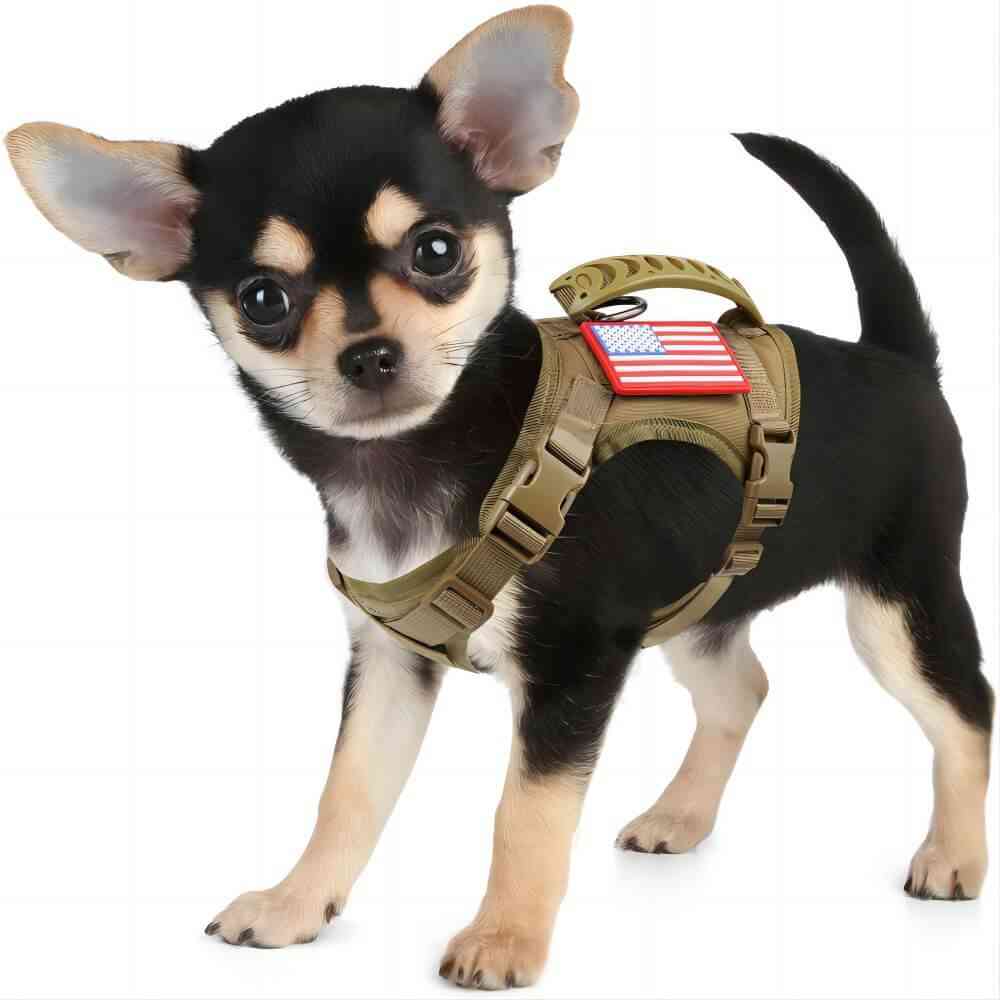

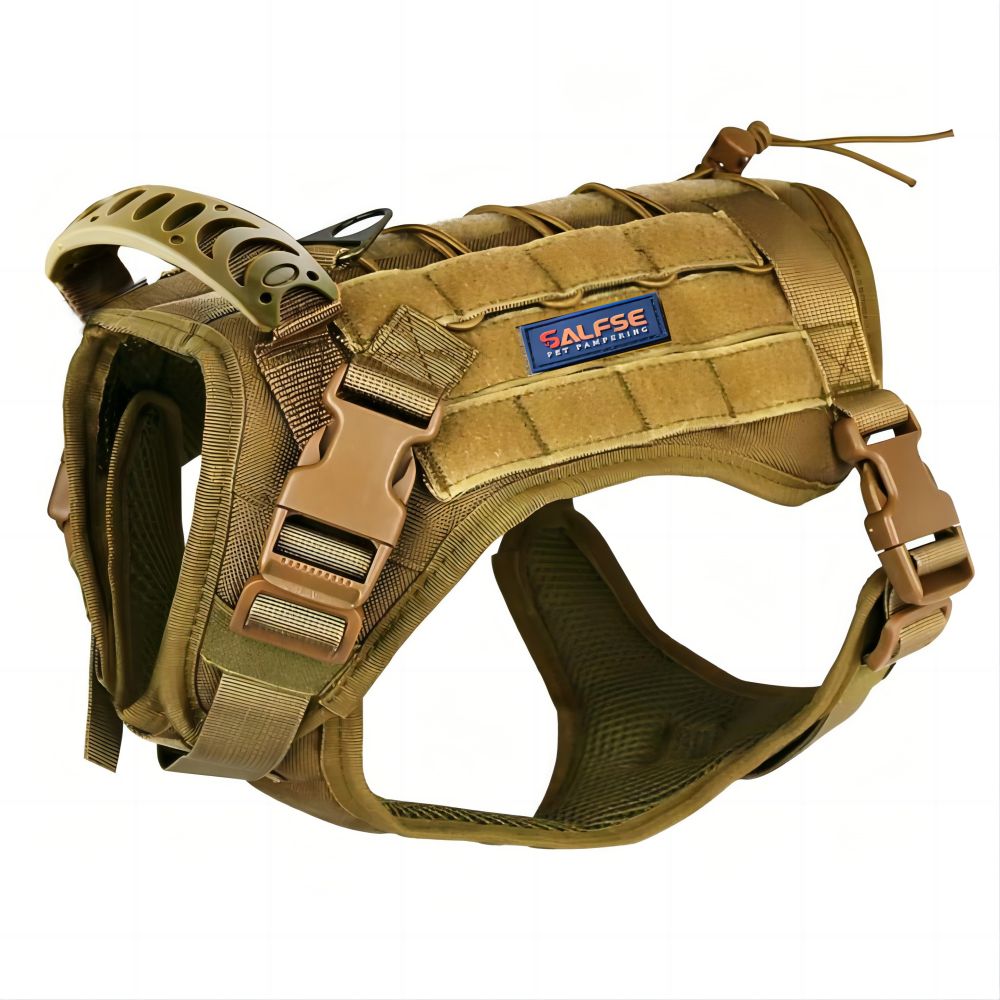
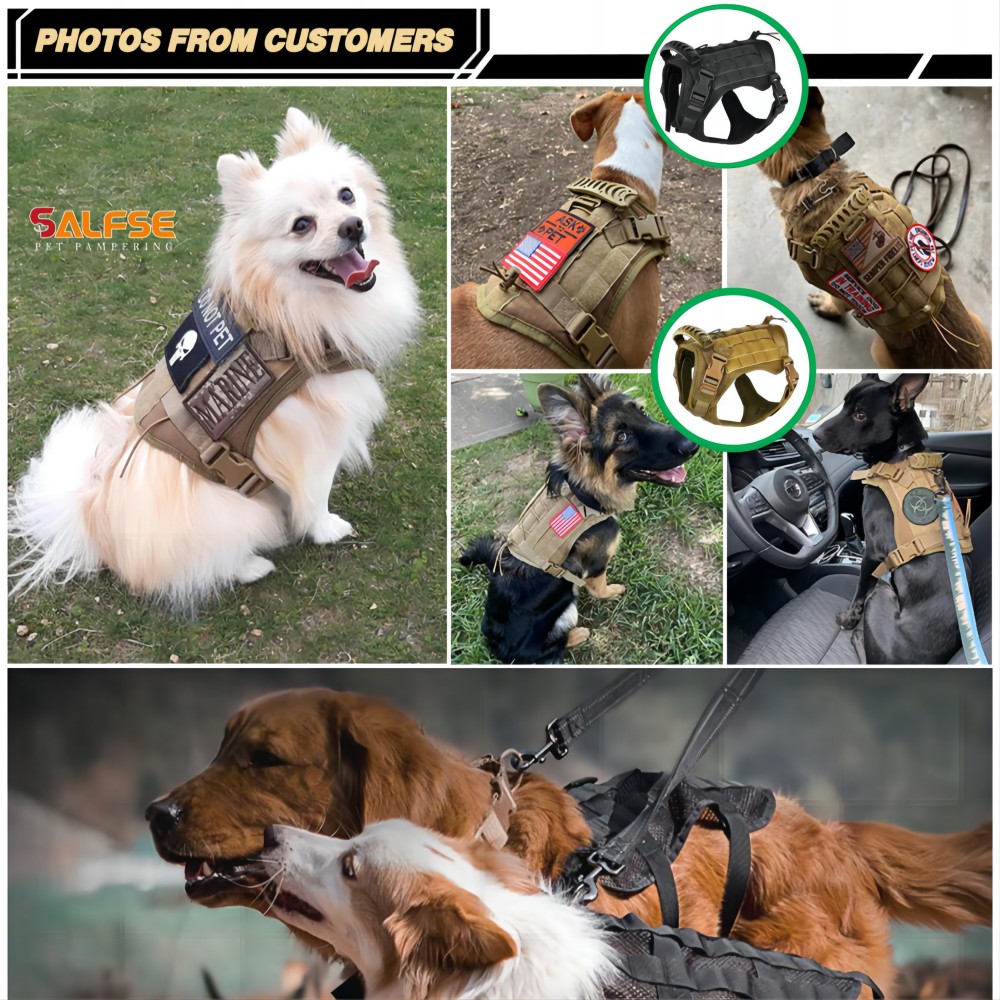
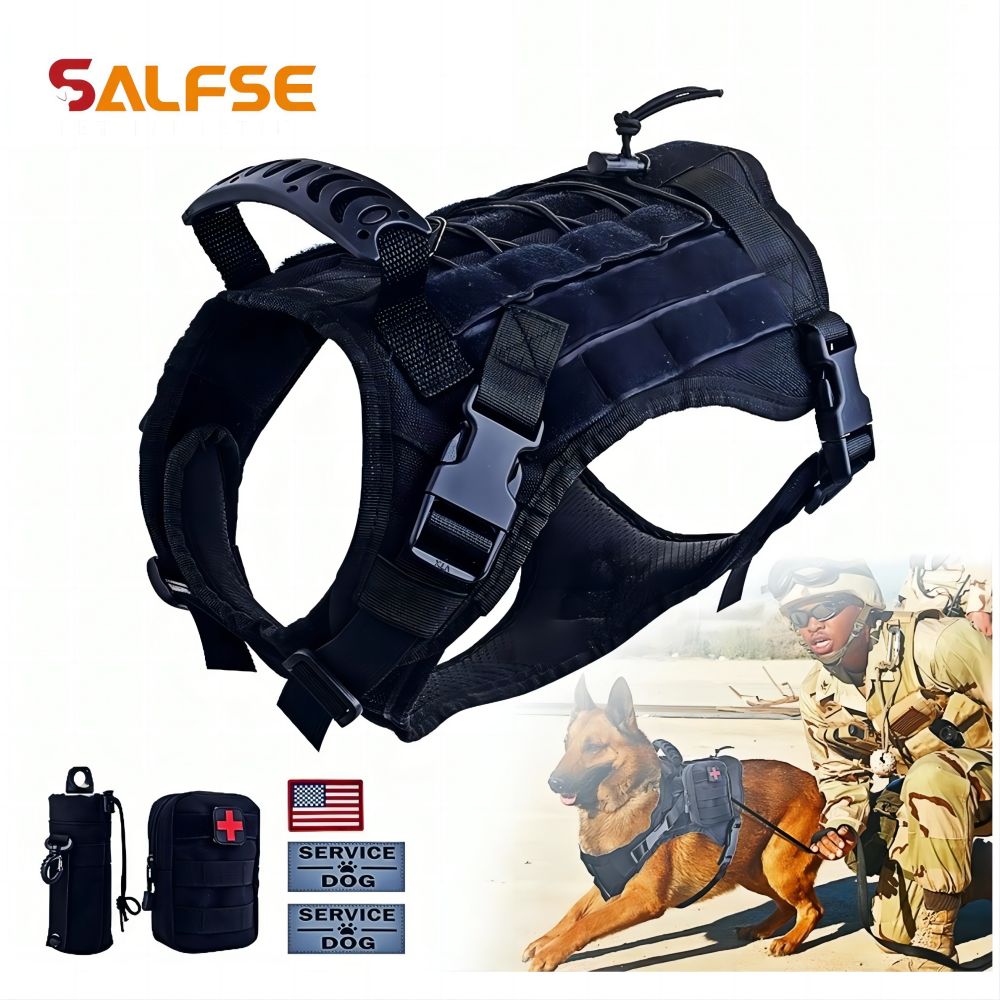
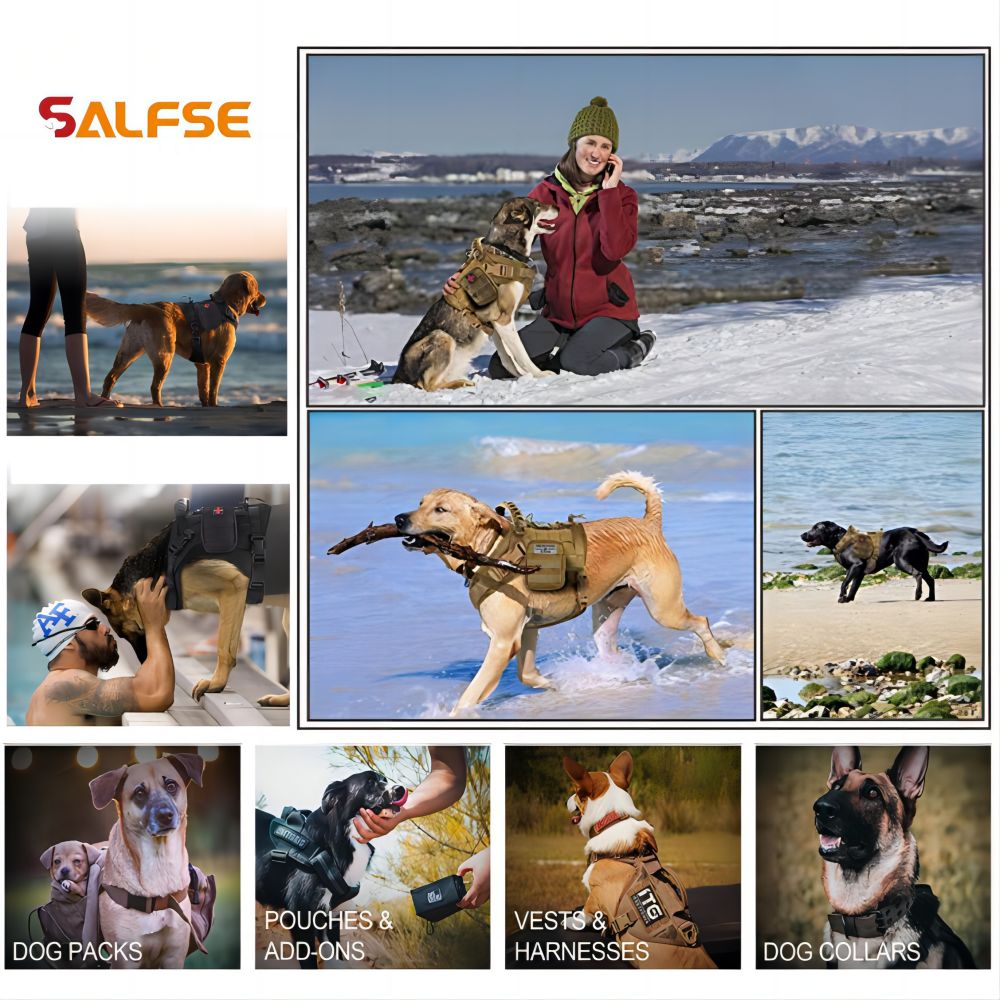

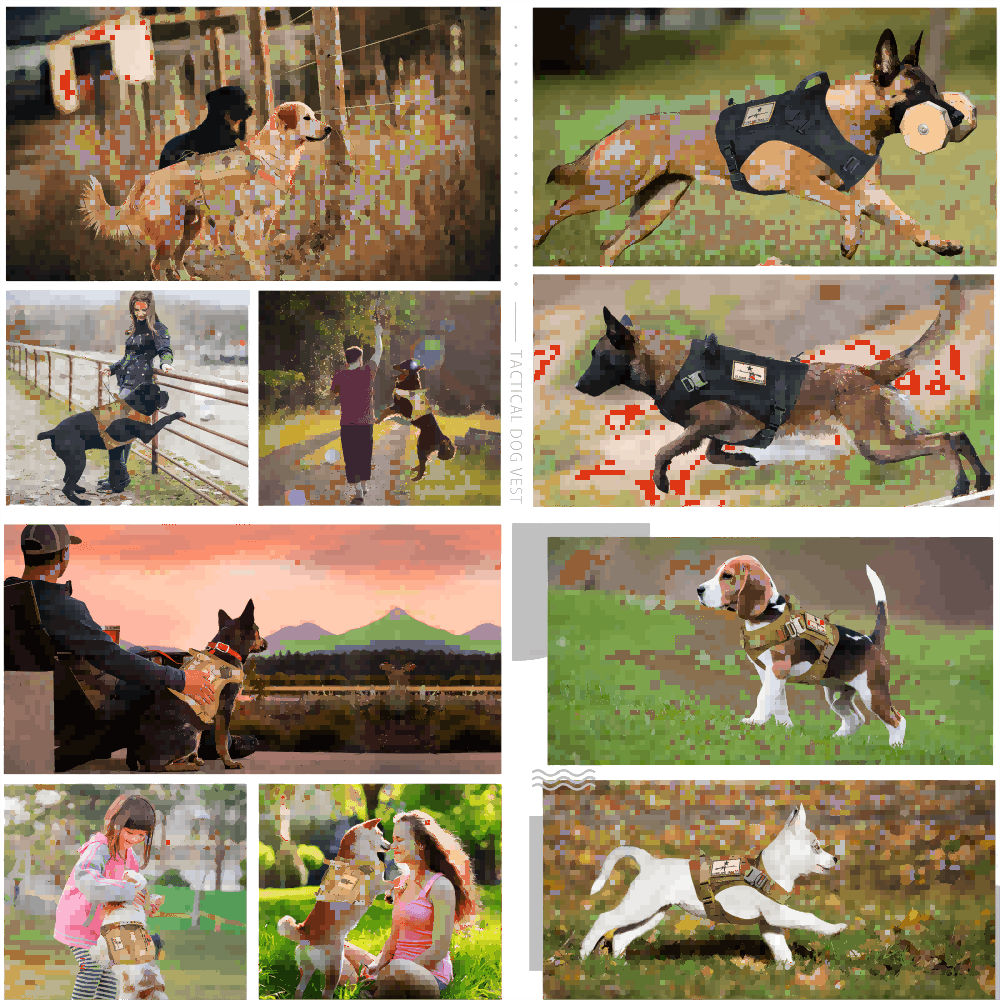
-1.png)



